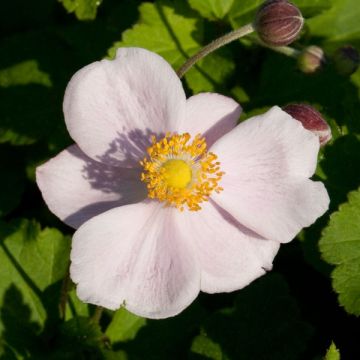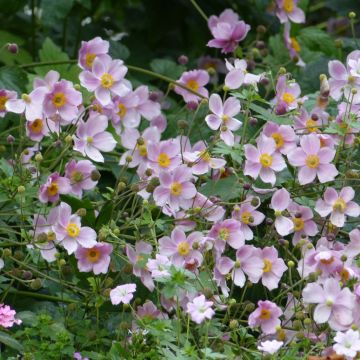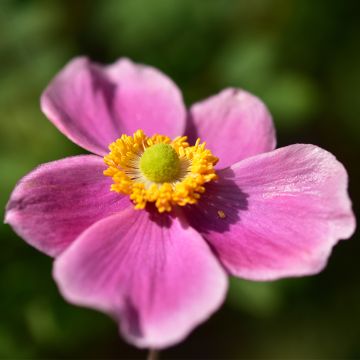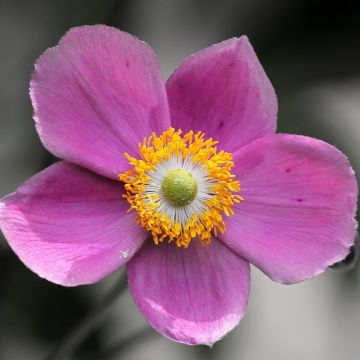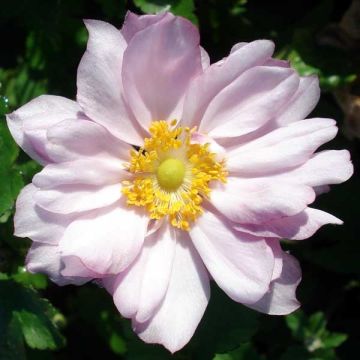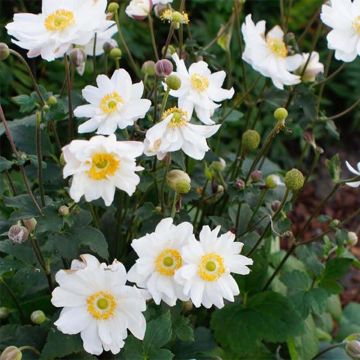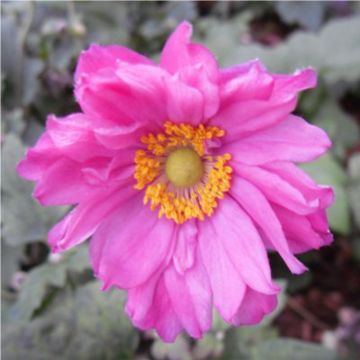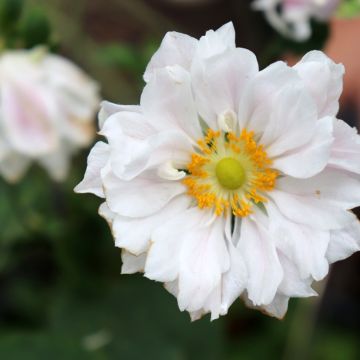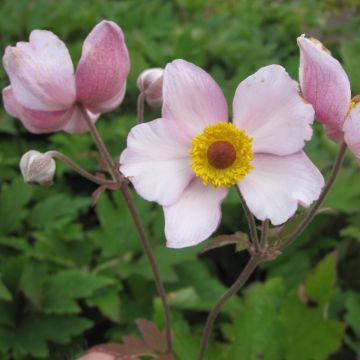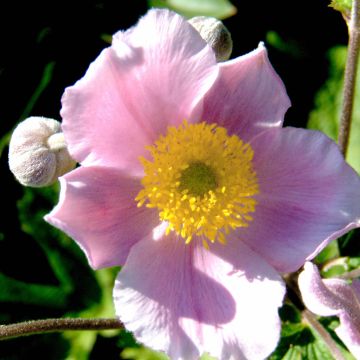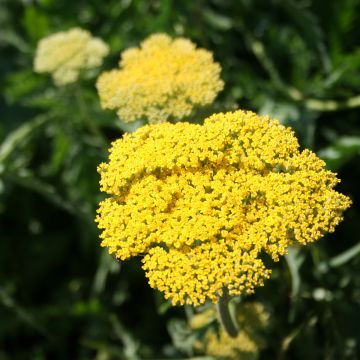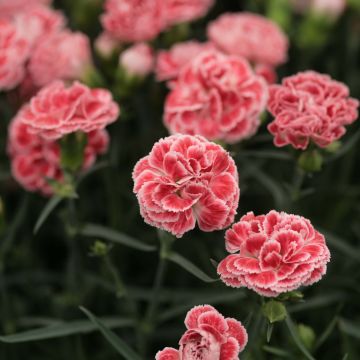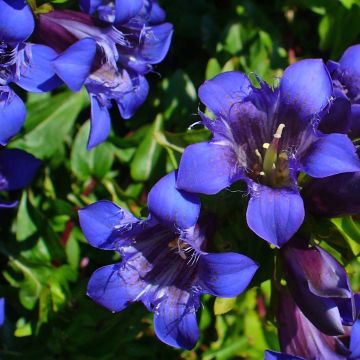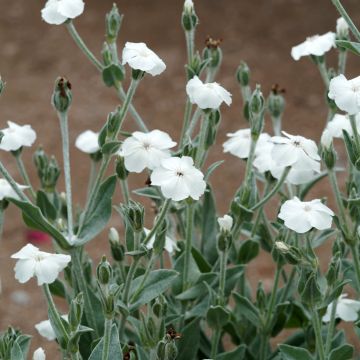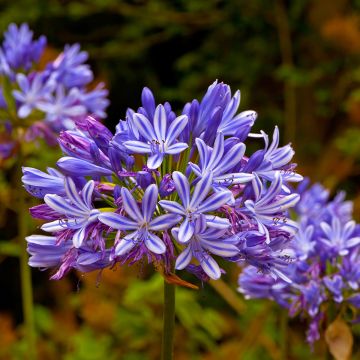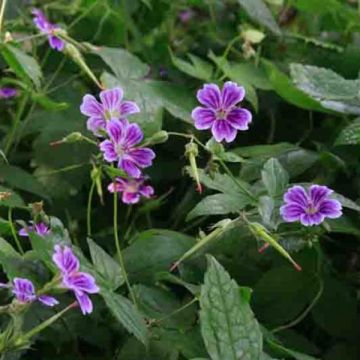

Anemone hupehensis Pretty Lady Susan
Anemone hupehensis Pretty Lady Susan
Anemone xhupehensis Pretty Lady Susan
Japanese Anemone, Windflower, Woolly anemone
The plant is really too small. Not worth the delivery. Let's wait and see if it picks up...
YL, 22/09/2024
Special offer!
Receive a €20 voucher for any order over €90 (excluding delivery costs, credit notes, and plastic-free options)!
1- Add your favorite plants to your cart.
2- Once you have reached €90, confirm your order (you can even choose the delivery date!).
3- As soon as your order is shipped, you will receive an email containing your voucher code, valid for 3 months (90 days).
Your voucher is unique and can only be used once, for any order with a minimum value of €20, excluding delivery costs.
Can be combined with other current offers, non-divisible and non-refundable.
Home or relay delivery (depending on size and destination)
Schedule delivery date,
and select date in basket
This plant carries a 12 months recovery warranty
More information
We guarantee the quality of our plants for a full growing cycle, and will replace at our expense any plant that fails to recover under normal climatic and planting conditions.

Would this plant suit my garden?
Set up your Plantfit profile →
Description
Anemone 'Pretty Lady Susan' is a variety with compact and bushy growth. From August, it produces an abundance of bright pink semi-double flowers that somewhat resemble poppies. They continue to bloom for several weeks. They open just above the very dark and beautifully palmate foliage. The charm of this lovely perennial becomes evident as the season comes to an end and other flowers begin to fade. Plant it in flower beds alongside autumn daisies and hardy chrysanthemums. It will also work well in a pot on a patio or balcony too.
Like her sisters 'Diana', 'Emily' and 'Maria', 'Pretty Lady Susan' is a hybrid Japanese anemone obtained in Japan by Mr. Yoshihiro Kanazawa. They have recently been introduced to the market in England. All display compact growth, an extraordinary abundance of flowers, and denser foliage than other varieties.
'Pretty Lady Susan' is a perennial plant of the Ranunculaceae family. It may be the result of cross-breeding between Anemone vitifolia, native to the Himalayas, and Anemone hupehensis, native to central and western China. This dwarf variety typically reaches 45 to 55cm (18 to 22in) in height (up to 60cm (24in) in shade), depending on the richness of the soil it grows in, with a diameter of 40 to 50cm (16 to 20in). Like other Japanese anemones, it is a perennial plant with fibrous 'tubers' that form large, vigorous, and rounded clumps. The foliage is deciduous to semi-evergreen depending on the climate. The foliage is highly dissected, dark green, strongly veined on the underside, and more or less pubescent. The abundant and prolonged flowering takes place from August-September to October-November. The 5cm (2in) diameter flowers are solitary. They are borne on short stems that barely rise above the foliage. They first appear as delightful oval and fluffy buds in a greyish-mauve colour, then open into flared cups composed of 6 rounded and irregular petals in a very bright pink. The centre of the flower is green before turning yellow, and is adorned with a beautiful crown of golden yellow stamens contrasting with the pink of the corolla. Japanese anemones are not demanding plants. They can live for decades in the same spot without requiring much maintenance.
Japanese anemone is one of the most beautiful autumn flowers. The varieties of the 'Pretty Ladies' series are very well suited to small gardens, perennial borders, and patios and balconies. They provide a flowery display from late summer until the first frost, blending their spontaneous flowering with that of autumn asters, sneezeweeds, and perennial chrysanthemums. The 'Susan' variety is perfect when planted in groups or with its sisters from the 'Pretty Ladies' series, along the edge of a flower bed, or in front of a hedge of hydrangeas and spindles. The finely dissected foliage of Japanese anemones adds a beautiful dark green touch to flower bouquets.
Report an error about the product description
Anemone hupehensis Pretty Lady Susan in pictures
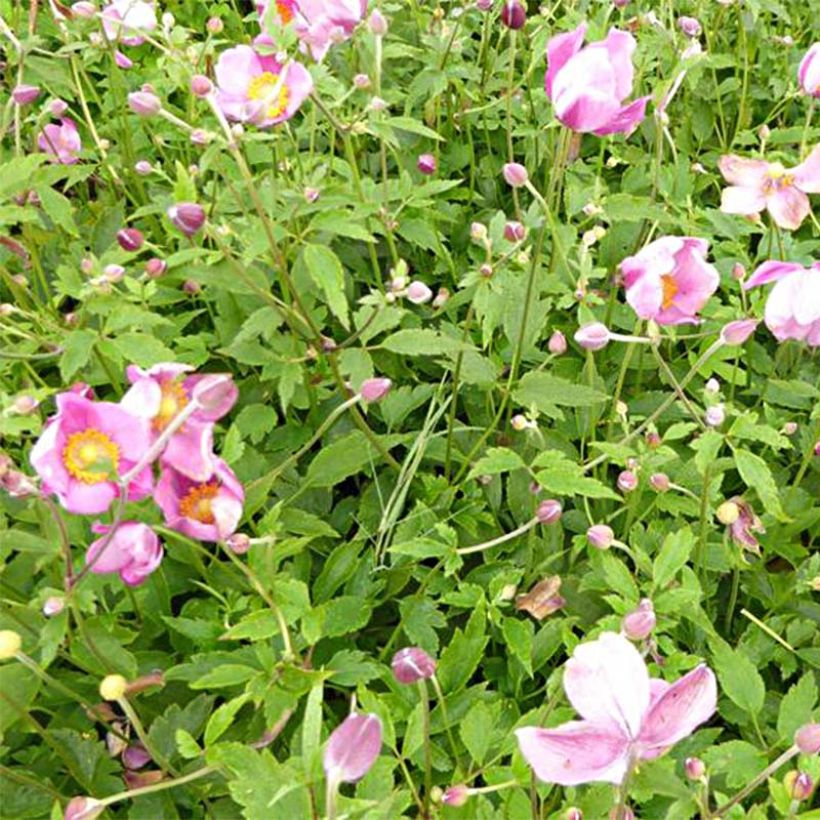

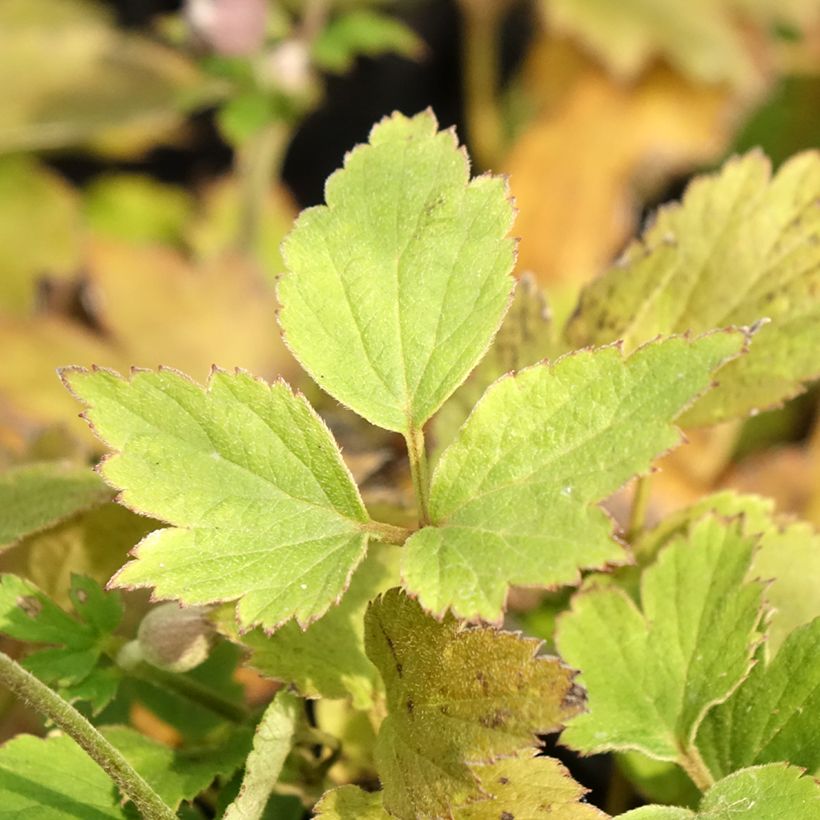

Flowering
Foliage
Plant habit
Botanical data
Anemone
xhupehensis
Pretty Lady Susan
Ranunculaceae
Japanese Anemone, Windflower, Woolly anemone
Cultivar or hybrid
Other Japanese Anemones
View all →Planting and care
Japanese anemones thrive in gentle sunlight or partial shade, in moist, loose, humus-rich soil with minimal limestone content. They slowly spread with the help of their underground rootstocks. Plant them outdoors in spring or autumn, spacing them 30cm (12in) apart. Plant in moist to wet, well-drained soil. Choose a location sheltered from strong winds that could flatten the clumps. Once the young plants are established, they should not be disturbed. The flowering becomes more abundant as the years go by. In late autumn, cut the flower stalks back to ground level. Every 2 or 3 years, apply well-rotted compost to their base to enrich the soil, as they are quite demanding.
Planting period
Intended location
Care
-
, onOrder confirmed
Reply from on Promesse de fleurs
Similar products
Haven't found what you were looking for?
Hardiness is the lowest winter temperature a plant can endure without suffering serious damage or even dying. However, hardiness is affected by location (a sheltered area, such as a patio), protection (winter cover) and soil type (hardiness is improved by well-drained soil).

Photo Sharing Terms & Conditions
In order to encourage gardeners to interact and share their experiences, Promesse de fleurs offers various media enabling content to be uploaded onto its Site - in particular via the ‘Photo sharing’ module.
The User agrees to refrain from:
- Posting any content that is illegal, prejudicial, insulting, racist, inciteful to hatred, revisionist, contrary to public decency, that infringes on privacy or on the privacy rights of third parties, in particular the publicity rights of persons and goods, intellectual property rights, or the right to privacy.
- Submitting content on behalf of a third party;
- Impersonate the identity of a third party and/or publish any personal information about a third party;
In general, the User undertakes to refrain from any unethical behaviour.
All Content (in particular text, comments, files, images, photos, videos, creative works, etc.), which may be subject to property or intellectual property rights, image or other private rights, shall remain the property of the User, subject to the limited rights granted by the terms of the licence granted by Promesse de fleurs as stated below. Users are at liberty to publish or not to publish such Content on the Site, notably via the ‘Photo Sharing’ facility, and accept that this Content shall be made public and freely accessible, notably on the Internet.
Users further acknowledge, undertake to have ,and guarantee that they hold all necessary rights and permissions to publish such material on the Site, in particular with regard to the legislation in force pertaining to any privacy, property, intellectual property, image, or contractual rights, or rights of any other nature. By publishing such Content on the Site, Users acknowledge accepting full liability as publishers of the Content within the meaning of the law, and grant Promesse de fleurs, free of charge, an inclusive, worldwide licence for the said Content for the entire duration of its publication, including all reproduction, representation, up/downloading, displaying, performing, transmission, and storage rights.
Users also grant permission for their name to be linked to the Content and accept that this link may not always be made available.
By engaging in posting material, Users consent to their Content becoming automatically accessible on the Internet, in particular on other sites and/or blogs and/or web pages of the Promesse de fleurs site, including in particular social pages and the Promesse de fleurs catalogue.
Users may secure the removal of entrusted content free of charge by issuing a simple request via our contact form.
The flowering period indicated on our website applies to countries and regions located in USDA zone 8 (France, the United Kingdom, Ireland, the Netherlands, etc.)
It will vary according to where you live:
- In zones 9 to 10 (Italy, Spain, Greece, etc.), flowering will occur about 2 to 4 weeks earlier.
- In zones 6 to 7 (Germany, Poland, Slovenia, and lower mountainous regions), flowering will be delayed by 2 to 3 weeks.
- In zone 5 (Central Europe, Scandinavia), blooming will be delayed by 3 to 5 weeks.
In temperate climates, pruning of spring-flowering shrubs (forsythia, spireas, etc.) should be done just after flowering.
Pruning of summer-flowering shrubs (Indian Lilac, Perovskia, etc.) can be done in winter or spring.
In cold regions as well as with frost-sensitive plants, avoid pruning too early when severe frosts may still occur.
The planting period indicated on our website applies to countries and regions located in USDA zone 8 (France, United Kingdom, Ireland, Netherlands).
It will vary according to where you live:
- In Mediterranean zones (Marseille, Madrid, Milan, etc.), autumn and winter are the best planting periods.
- In continental zones (Strasbourg, Munich, Vienna, etc.), delay planting by 2 to 3 weeks in spring and bring it forward by 2 to 4 weeks in autumn.
- In mountainous regions (the Alps, Pyrenees, Carpathians, etc.), it is best to plant in late spring (May-June) or late summer (August-September).
The harvesting period indicated on our website applies to countries and regions in USDA zone 8 (France, England, Ireland, the Netherlands).
In colder areas (Scandinavia, Poland, Austria...) fruit and vegetable harvests are likely to be delayed by 3-4 weeks.
In warmer areas (Italy, Spain, Greece, etc.), harvesting will probably take place earlier, depending on weather conditions.
The sowing periods indicated on our website apply to countries and regions within USDA Zone 8 (France, UK, Ireland, Netherlands).
In colder areas (Scandinavia, Poland, Austria...), delay any outdoor sowing by 3-4 weeks, or sow under glass.
In warmer climes (Italy, Spain, Greece, etc.), bring outdoor sowing forward by a few weeks.






























